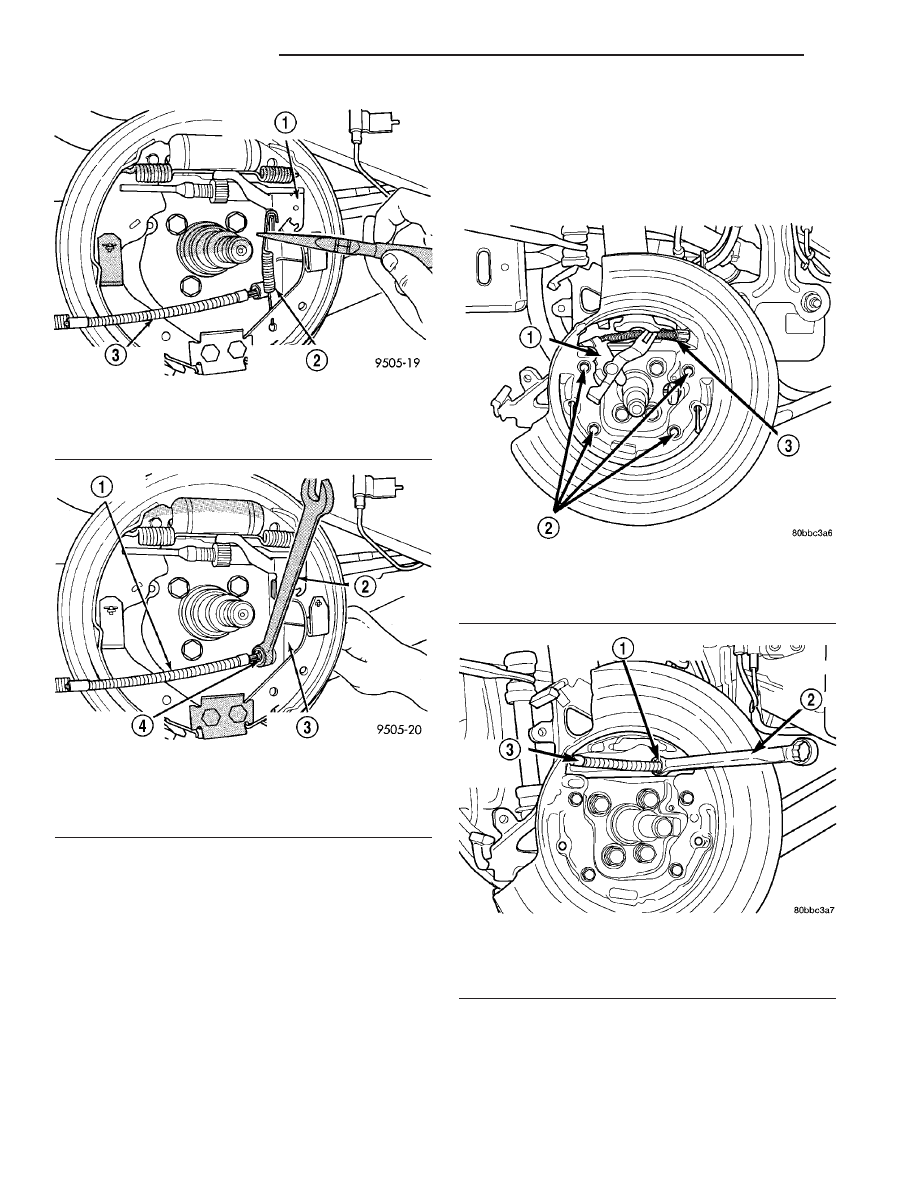Chrysler PT Cruiser. Manual - part 399

(16) To remove the parking brake cable from the
disc brake adapter on vehicles equipped with rear
disc brakes:
(a) Remove the parking brake actuating lever
from the parking brake cable (Fig. 11).
(b) Remove the parking brake cable from the
rear disc brake adapter. The parking brake cable
can be removed from the disc brake adapter using
a
1
⁄
2
inch offset box wrench to compress the locking
fingers on the parking brake cable retainer (Fig.
12).
Fig. 9 Actuating Spring
1 - BRAKE SHOE ADJUSTMENT LEVER
2 - ADJUSTMENT LEVER ACTUATING SPRING
3 - PARK BRAKE CABLE
Fig. 10 Parking Brake Cable Removal
1 - PARK BRAKE CABLE
2 - 1/2
88
WRENCH
3 - REAR BRAKE SUPPORT PLATE
4 - PARK BRAKE CABLE RETAINER
Fig. 11 Parking Brake Actuator Lever
1 - SHOE ACTUATOR LEVER
2 - SHIELD MOUNTING SCREWS
3 - REAR PARKING BRAKE CABLE
Fig. 12 Parking Brake Cable Removal
1 - CABLE RETAINER
2 - OFFSET BOX WRENCH
3 - PARKING BRAKE CABLE
2 - 32
REAR SUSPENSION
PT
AXLE - FRONT WHEEL DRIVE REAR (Continued)